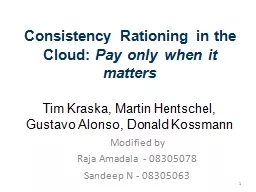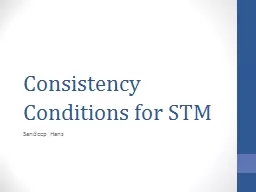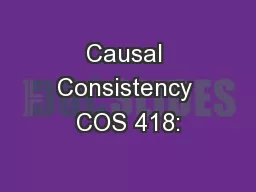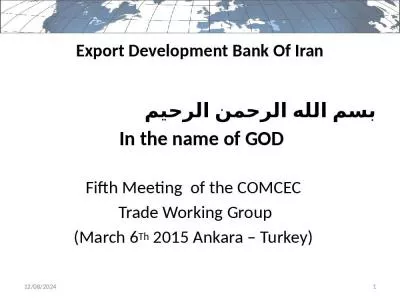PPT-Consistency Rationing in the Cloud:
Author : calandra-battersby | Published Date : 2016-06-27
Pay only when it matters Tim Kraska Martin Hentschel Gustavo Alonso Donald Kossmann 27092009 Systems Modified by Raja Amadala 08305078 Sandeep N 08305063
Presentation Embed Code
Download Presentation
Download Presentation The PPT/PDF document "Consistency Rationing in the Cloud:" is the property of its rightful owner. Permission is granted to download and print the materials on this website for personal, non-commercial use only, and to display it on your personal computer provided you do not modify the materials and that you retain all copyright notices contained in the materials. By downloading content from our website, you accept the terms of this agreement.
Consistency Rationing in the Cloud:: Transcript
Download Rules Of Document
"Consistency Rationing in the Cloud:"The content belongs to its owner. You may download and print it for personal use, without modification, and keep all copyright notices. By downloading, you agree to these terms.
Related Documents














